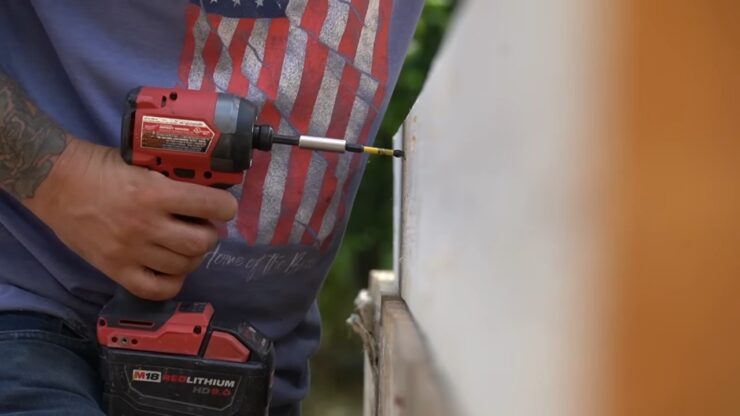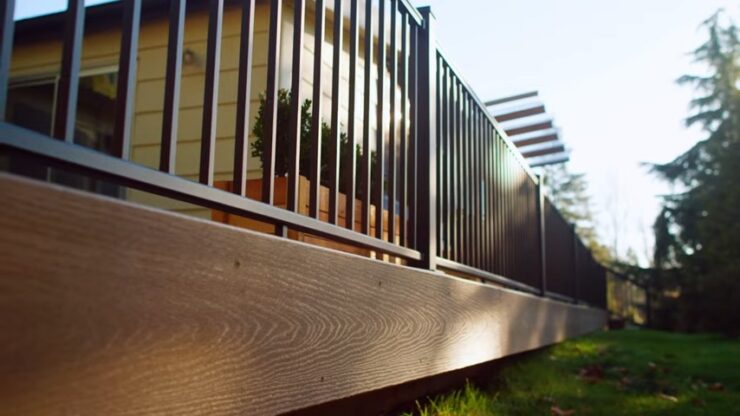

Thinking of building a new garage, shed, or fence near your neighbor’s property? It’s essential to know the rules first! Depending on where you live, from bustling cities to quiet countrysides, the guidelines can vary.
In short, always check the local rules and chat with your neighbor before building anything close to their property. Better safe than sorry!

Stepping into the world of property ownership? Or maybe you’re just brushing up on property rules? Either way, when you’re thinking of adding something new to your space, there are a few key terms and tips to keep in mind:
Think of setbacks as the “personal space” for buildings. It’s the distance that needs to be maintained between your new structure and the property boundary. This isn’t just about the space between your house and the new garage you’re dreaming of, but also between the new structure and other landmarks like sidewalks or rivers. Your local town or county sets these rules.
Imagine wanting to build something, but your property doesn’t have enough room. That’s where easements come in. It’s like asking your neighbor, “Can I use a bit of your space?” These agreements can be informal or legally binding. But remember, if there’s ever a disagreement later on, having a documented easement can be a lifesaver.
Ever been unsure about where your property ends and your neighbor’s begins? Or maybe you both agree to adjust the boundaries a bit? Quitclaim deeds are the solution. They’re legal tools that help neighbors sort out or transfer property lines. But, it’s essential to have a lawyer in the mix to make sure everything’s clear for future homeowners.

Building is not just about bricks and mortar; it’s about relationships. Chat with your neighbors and local authorities about your plans. It’s the best way to keep things smooth. And don’t forget to do your homework. Know who’s who in your local government and who’s in charge of building permits.

Getting a permit isn’t just about filling out a form. It’s a process. After you’ve mapped out your property, you can apply. But remember, patience is key. Approval can take days or even months.
And once you get that permit, keep an eye on the clock. Depending on where you live, there might be a time limit on when you need to start and finish your construction.
In a nutshell, building near property lines requires a mix of communication, legal know-how, and patience. But with the right approach, you’ll be laying the foundation in no time!

Starting a building project? First things first: get that building permit! Here’s a quick rundown of what you need to know:
Thinking of sprucing up your property? Before you start, it’s crucial to know if you need a building permit. Here’s a quick guide to help you figure it out:

If you’re planning any of the following, it’s a good bet you’ll need a permit:
Even if your project is indoors, you might still need a permit, especially if:
Tinkering with any of the following? Time to check for permit requirements:
If you’re unsure whether your project needs a permit, it’s always better to be safe than sorry. Give your local office a call. It’s way better than facing fines down the road. Happy renovating!

Venturing into a building project near your property line? Tread carefully! Building without the right permits or too close to your neighbor’s property can land you in hot water. Here’s what you need to know:
Building without the necessary permits can lead to:
Building in the wrong place or the wrong way can be classified as a zoning violation. The consequences can be:
All hope isn’t lost. If you’re slapped with a violation:
Typically, you cannot build directly on the property line. Local regulations usually dictate setbacks that determine how close you can build to the boundary.
The distance you can build a deck from your property line varies based on local regulations. It’s essential to check with your local municipality or county for specific guidelines.
The rules differ by location. Some places might allow fences right on the boundary, while others may require a small setback.
This rule refers to a situation where a person occupies a piece of land continuously for seven years without dispute. After this period, they may claim ownership. However, it’s crucial to consult with legal professionals regarding specific cases.
This is a guideline used in planning, especially concerning extensions and loft conversions. It ensures that a new building doesn’t overly block light to neighboring properties. The rule implies that an imaginary 45-degree line from the middle of your neighbor’s nearest window should not be crossed by your building.
While it’s a common courtesy to give neighbors the more finished side of a fence, it’s not always a legal requirement. Local regulations or neighborhood agreements might dictate this practice.
Yes, you can put two fences next to each other unless local regulations prohibit it. However, it’s a good idea to discuss this with your neighbor to avoid potential disputes.
In California, the rules about how close you can build to a property line vary by city and county. It’s essential to consult local zoning ordinances and building codes for specific guidelines.
The extended process of obtaining a permit, figuring out one’s property lines, and the lengthy construction process can be a process that is tiring for many, especially if you are applying for a permit for the first time. The finished product when the process is over is one of the greatest pleasures in the world of homeownership, with the benefit of long-awaited gratification and excitement.